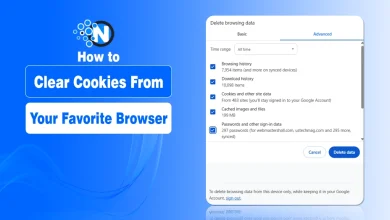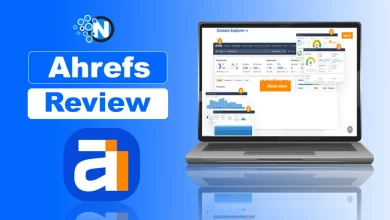10 CDN Optimization Techniques for Achieving 95% Cache Hit Ratio

Have you ever spent hours optimizing every byte of your website’s code, only to see your speed score barely budge?
If your answer is yes, you’re not alone. The truth is, the most powerful tool for improving website speed often isn’t your server or your code, it’s your Content Delivery Network (CDN).
However, simply “turning a CDN on” is not enough. Achieving a best-in-class user experience requires moving beyond generic setups and adopting advanced edge configuration practices.
In this expert-level guide, we’re moving past basic caching rules. I’ll show you how to utilize advanced CDN optimization techniques to significantly improve metrics like LCP and TTFB, guaranteeing maximum Trustworthiness and speed for every visitor.
What Does CDN Optimization Mean?
A Content Delivery Network (CDN) is a network of servers strategically placed around the globe to cache and deliver content—like HTML pages, images, videos, stylesheets, and JavaScript files closer to users.
CDN optimization is all about fine-tuning a Content Delivery Network to maximize website performance, speed, reliability, and cost-efficiency. It involves strategic configuration and monitoring to ensure content is delivered as quickly and securely as possible to users around the world.
According to Fortune Business Insights, the CDN industry is expected to reach 132.32 billion by 2032. That’s a Compound Annual Growth Rate (CAGR) of 23.30%.

The Core Web Vitals Connection (Why This Matters)
| CWV Metric | Optimization Impact |
| Largest Contentful Paint (LCP) | Optimized image compression, lazy loading, and aggressive caching of HTML/CSS directly reduce the time to render the main content block. |
| Interaction to Next Paint (INP) | Reduced TTFB means the main thread is less blocked waiting for server responses, leading to better overall responsiveness. |
| Time to First Byte (TTFB) | A high Cache Hit Ratio (CHR) ensures the content is served from the geographically nearest Edge Server, bypassing the origin and drastically lowering TTFB. |
Top 10 CDN Optimization Techniques
1. Managing Browser Cache Control
Efficient browser caching is a vital element of CDN optimization. Configure your CDN to capitalize on browser caching, ensuring that static content resides inside the user’s browser cache, diminishing the need for repetitive downloads.
There are different techniques involved in this as well such as using dynamic content caching and static content caching. Use any of these options that suit your site well and enhance its speed.
2. Use Image Compression
Prioritize the compression of files before transporting them to the consumer. Many CDNs support compression strategies like Gzip or Brotli, which can drastically reduce loading instances while activated through CDN configurations.
| Feature | Gzip | Brotli |
| Compression Ratio | Moderate | High (Up to 25% better) |
| Browser Support | Universal | Near-Universal (Modern browsers only) |
| Recommendation | Set your CDN to use Brotli as the primary method for HTML, CSS, and JS. Use the CDN’s automatic fallback to Gzip for older clients. |

3. Use Lazy Loading
Implementing lazy loading can be a game-changer for websites weighted down with pics. This technique delays loading non-visible photos, ensuring they are fetched best when customers scroll to the applicable segment.
- Critical CSS: Extract the minimal CSS required to render the Above-the-Fold (ATF) content and inline it directly into the
<head>of your HTML. This eliminates render-blocking external CSS and accelerates LCP. - Strategic Lazy Loading: Use the native HTML
loading="lazy"attribute, but apply it only to images and iframes that are well Below-the-Fold (BTF). NEVER lazy-load the LCP element.
This reduces initial web page load times and complements the overall consumer experience.
4. Employ a Multi-CDN Approach
Using a multi-CDN approach is one of the best optimization techniques. It involves using multiple CDN systems for one website. It increases redundancy and improves reliability. In other words, if one system goes down or starts having issues, other systems will be used in its place, keeping the site speed intact.
It also offers a global reach, making your site faster to load for users in different countries.
5. Use a Combination of CSS and JavaScript Files
Minimizing the variety of HTTP requests is pivotal for increasing load times. A strategic approach involves combining multiple CSS and JavaScript documents into a single file, reducing the number of requests made with the browser’s aid.
6. Enable IPv6 Connectivity
Enabling IPv6 connectivity can directly affect your website’s load speed. It improves routing and carefully handles internet traffic.
This IP has much more space for storing addresses than IPv4. More addresses help in handling data packets more efficiently.
7. Responsive Design and Adaptive Images
Mobile optimization is an essential issue of website speed. Ensure your website employs responsive design ideas and serves adaptive pixels to cater to various cellular devices.
This no longer most effectively complements the person’s interest in cellular systems but also positively influences your website’s search engine rankings.
8. Minimizing Third-Party Integrations
While third-party integrations can upload capability, they can also introduce delays. Evaluate and reduce the wide variety of 0.33-party scripts and services for your website to streamline the loading system, particularly on mobile devices with various network situations.
9. Regular Performance Monitoring
Consistent vigilance is critical to sustained internet site optimization. Use tools like Google PageSpeed Insights or Pingdom to regularly monitor your website’s performance. Identify areas for development and alter your CDN configuration.


10. Implementing Periodic CDN Performance Reviews
The digital world is ever-evolving, and so are CDN vendors. Periodically review your chosen CDN’s overall performance and explore new optimization features introduced by the company.
Staying abreast of updates ensures that your business website continues to benefit from today’s advancements.
Final Thoughts
A CDN system is responsible for handling and delivering your website’s content. It directly impacts your website’s speed and responsiveness. So, it is important to keep it as efficient as possible. Experts use different techniques for CDN optimization.
It includes using multiple CDN networks and IPv6. It also involves handling browser caches carefully. Such techniques are mentioned above in detail. Make sure to use them in order to make your website fast and responsive.
You’ve done the hard work, but no speed boost?
It’s time for expert intervention. Let the Nogentech team fine-tune your site for the speed you deserve. Contact us for more details & services!
Frequently Asked Questions (FAQs)
Is using multiple CDNs for a site expensive?
Yes. Using multiple systems for one site can be an expensive approach.
Can I upload low-quality images to improve CDN speed?
Yes. You can do that as long as the low-quality images do not affect your user experience.
Does CDN optimization reduce latency?
Absolutely. Optimizing this system definitely reduces your latency.




